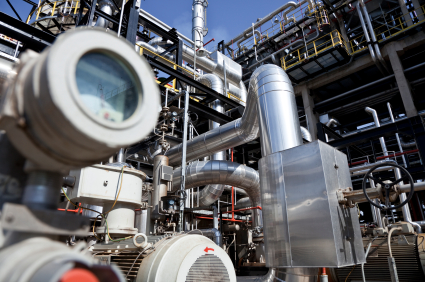
New source performance standards should include energy efficiency.
By harvesting the nation’s vast energy-efficiency opportunities, the Obama Administration can spur meaningful reductions in power sector greenhouse gas emissions while saving American families and businesses money, creating jobs at home, and securing reductions in all air pollutants. Specifically, the U.S. Environmental Protection Agency (EPA) has a key opportunity to tap the bountiful resources of energy efficiency solutions by including them in its design of greenhouse gas performance standards for new and existing power plants.
Far too often, the economic benefits of energy efficiency are overlooked. According to a 2008 study, energy efficiency solutions could achieve an average 23% gain in efficiency with a benefit-cost ratio of nearly 2:1. That is, every dollar spent on efficiency will return two dollars in reduced energy costs. Additionally, implementing these energy efficiency measures could generate 600,000-1,500,000 jobs by 2030, and add 0.1% to the GDP.
My company recently joined with more than fifty other businesses and trade associations in writing to the Obama Administration that including energy efficiency in greenhouse gas emission standards for power plants will “be a critical step toward making American manufacturers more competitive while addressing climate change.” Similarly, the Industrial Energy Consumers of America, a trade group representing industrial energy consumers, recently wrote to President Obama that “[e]nergy efficiency is a superb measure because once implemented it typically reduces energy consumption and related power plant emissions year after year without additional capital costs.”
The Department of Energy’s Oak Ridge National Laboratory has examined the benefits of more efficiently utilizing coal and gas as they are burned to make electricity (currently, two-thirds of the fuels’ useful energy is simply vented into the atmosphere). It praised efforts to use a single fuel to obtain both heat and power simultaneously, rather than burning fuel for power, dumping two-thirds of its energy into the air, and then burning another fuel for heat.
The processes of deriving both heat and power from one fuel source are known as Combined Heat and Power (CHP) and Waste Heat Recovery (WHR). The United States currently derives 12% of its power through these processes. According to the Department of Energy, increasing CHP and WHR production to 20% of US electric capacity by 2030 would create 1,000,000 jobs, replicate the power of more than 400 power plants, and avoid more than 60% of the increase in CO2 emissions over that period – just from this one energy efficiency investment.
The vast majority of CHP and WHR manufacturers and developers are located in the United States. In addition to deploying these home-grown technologies to build the efficient, clean, and reliable electricity system our businesses require for economic growth, the United States can export that technology throughout the world.
Here at home, several states have provided the proving grounds for these solutions. In 2007, energy efficiency programs in Vermont, Hawaii, Connecticut, and California each reduced electricity demand by over one percent. With the right policies, such reductions could be replicated elsewhere and continue over time.
EPA’s greenhouse gas performance standards for fossil fuel-fired power plants can extend the energy gains experienced in these several states to the entire nation. The performance standards should allow utilities to comply by reducing greenhouse gas emissions through increased efficiency of energy generation and energy use. This will drive investments in energy efficient technologies such as WHR and CHP. Only by crafting sensible environmental standards that promote proven, energy-efficient solutions can the United States achieve greenhouse gas reductions, save businesses and families money, and secure a stronger future.




